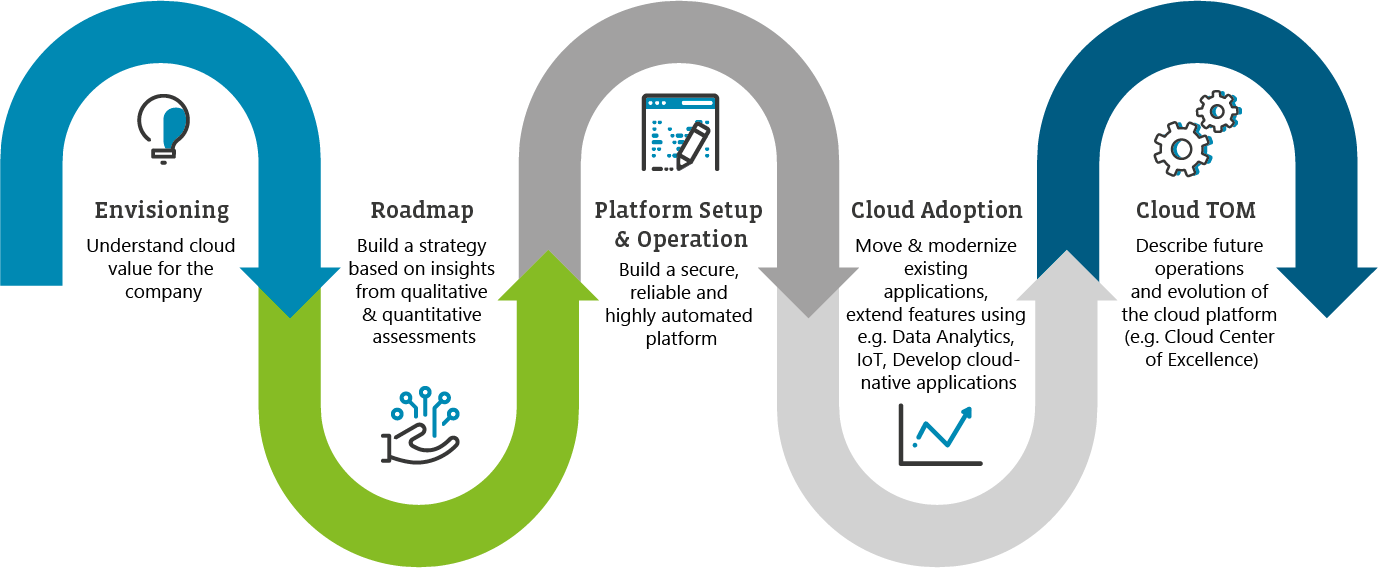It all starts with a vision: public cloud services, on demand, scalable, and low in cost. Companies expect great things from the use of the many services offered by hyperscalers such as Microsoft Azure, AWS, and Google Cloud. These services are to relieve the burden on businesses in light of the mounting challenges in IT operations, much as a high degree of automation helps in the face of an increasing shortage of skilled workers.
Caution about shadow IT
A pattern has emerged in consulting projects wherein many companies are under what is known as an illusion of cloud readiness. Specialized departments utilize services from the public cloud on their own if IT teams cannot serve this demand. The return on investment is still nowhere to be seen. Instead, there are two parallel worlds: the on-premises infrastructure on the one hand, and one or more public cloud platforms on the other.2
Moving entirely to the public cloud is a losing proposition for most businesses. Instead, these companies are now faced with the challenge of tackling the transformation to an integrated hybrid model, which will look different depending on the business model and industry.
The five phases of the cloud journey
We can think of this transformation as taking place in five phases. We will report on each of these phases in individual blog posts now and then. The goal is to reflect on methods drawn from real-world practice that are suitable to support these projects during the relevant phase.
We can think of the “cloud journey” as taking place in five phases, with organizations moving through these phases both iteratively and in parallel.
The start comes with formulation of a vision, which hones the understanding of the value of using cloud services for the company.
The roadmap is created through analysis of the existing infrastructure and of the requirements for future operation that arise from the vision. A cost-effectiveness study considers qualitative and quantitative factors alike in order to counter incorrect expectations of cost savings through the public cloud.
The platform setup and operation phase is all about building an environment in the public cloud. It is during this phase that the benefit of a transparent vision becomes apparent, as it allows the organization to formulate principles that serve as guidance for central architecture decisions during subsequent phases.
This is followed by migration of on-premises services and the development of cloud applications as part of cloud adoption. This is accompanied by the development of an organization with associated processes and skills that integrates the use of public cloud and on-premises services. The cloud target operating model (TOM) strives for continuous evolution and refinement guided by the company’s goals.
Success factors
Experience has shown that there are four elements to any successful cloud journey:
- adjustment of the organization and skills to reflect the new circumstances,
- a strategy and, based on that strategy, a catalog of the services to be performed in the future,
- a technical implementation that is scalable, and
- active management of the transformation project so that when the new services are in use, the old systems can be dismantled effectively.
Each of these success factors is also reflected in the phases of the cloud journey. This project, too, is a major challenge, like any transformation. For this reason, companies should look to standards and proven methods for guidance. We will be presenting these here in later posts.


